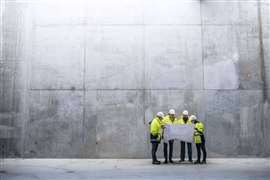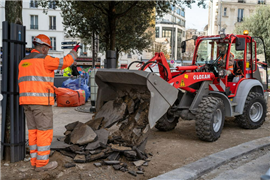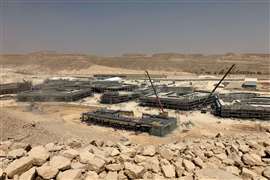Tower cranes and the coronavirus
31 March 2020

Safety advice has been issued by the Construction Plant-hire Association (CPA) on how to safely leave tower cranes out of service, potentially for several months, due to the coronavirus.
The CPA’s Tower Crane Interest Group (TCIG) information comes as construction sites around the world are being mothballed and left and unattended. The tower crane safety alert states “failure to take the crane out of service in line with manufacturer’s instructions and to periodically inspect the crane while it is out of service could result in very high wind loadings being placed on the crane with consequential collapse of the jib or the whole crane,” CPA said.
The list of advice includes obtaining the latest out of service information from the crane’s manufacturer or supplier for that make, model and configuration. It should be checked against the lift plan. Make sure the crane is in the correct out of service condition.
It is advised that the jib of luffing cranes is left at the longest possible radius while allowing for surrounding obstacles. That is instead of the minimum possible out of service radius.
On a conventional saddle jib crane park the trolley where the manufacturer says it should be.
Make sure the mechanism for free slewing is working, leave the crane in that position and report any faults.
Note the direction the jib is pointing in relation to the wind direction. A free slewing jib should follow the wind direction. If it does not then inform the crane supplier service department immediately.
Before leaving the crane make sure all wind sails or advertising panels are secure and properly fixed. Make sure any barriers to prevent intruders are properly in place and secure.
All keys should be given to a project manager or their representative and make sure the crane’s service people know how to contact the keyholders.
The base of the crane needs to be kept clear of surface water.
Periodic inspections must be made and by a competent person. Where the crane driver is unavailable the crane supplier needs to do it. A regime of thorough examination should also be maintained. Before being returned to service, the crane should be inspected by the crane supplier.
The CPA TCIG guidance is here: https://www.cpa.uk.net/news-events/tower-crane-safety-alert–coronavirus/
Concerns have been raised with, for example, the Health & Safety Executive in the UK, relating to potential difficulties with maintaining a schedule of statutory inspections in time limits. HSE has issued a statement on this at: https://www.cpa.uk.net/news-events/hseguidancelolercoronavirus/
STAY CONNECTED



Receive the information you need when you need it through our world-leading magazines, newsletters and daily briefings.
CONNECT WITH THE TEAM










